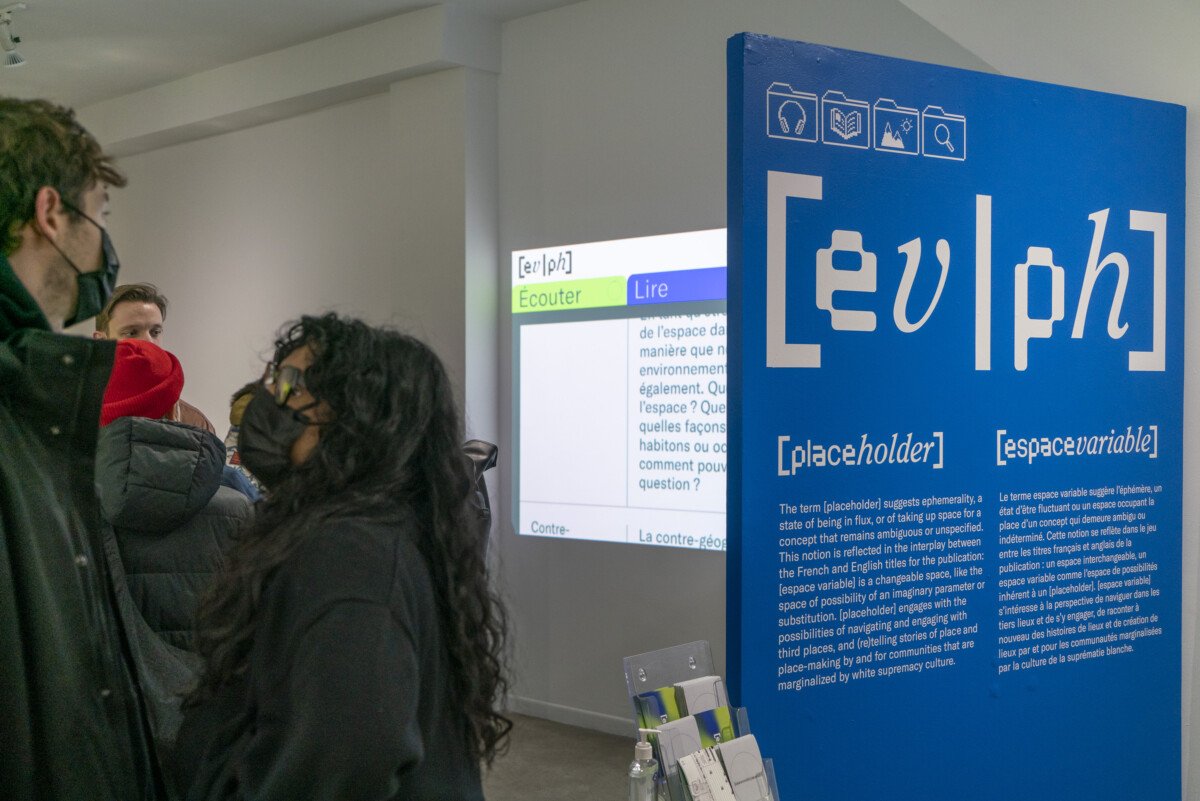Concordia students and alumni open a new online art exhibit in regards to adapting to a world affected by COVID-19
La Centrale galerie Powerhouse hosted the vernissage of their new exhibit [espace variable | placeholder] on the evening of Feb. 2. The online gallery was created, in part, as a statement that the world of art has shifted to the internet.
It was created out of inspiration from a term coined by sociologist Ray Oldenburg: the third place. Third places are the spaces where people can spend time in between their first place (home) and second place (work). As of recently, the world’s third place is the internet.
The exhibit is divided into four categories: Read, Observe, Listen, and Interact.
Read, the first category presents texts reflecting artists’ experiences involving themes pertaining to third places, place-making, technological presence, and artistic subversion.
Observe, the second category, displays the interdisciplinary approach to the concept of placeholding.
Listen, the third category, involves audible artwork alluding to memory, transmission and reciprocity.
Interact, the last, is a space which provides literature for readers to further their understanding and research of third places.
This exhibit explores navigation through third places as well as artists’ “(re)telling” of stories about finding a voice, or making a place, of those who have been demeaned by racial injustice.
One of the installations at the vernissage was from artist-in-residence rudi aker of the Byte-sized Sound Creation Residency. “This work, a bird in the hand, is what feels most appropriate to share with a larger public from those recorded conversations,” explains aker in their artist statement. The audio piece is “a move to safeguard our personal and familial histories from the often prying and exploitative consumption of Indigenous oral histories.”
My Little thingliness (SCRUB-A-DUB-DUB-BEBOP), another creation presented at the vernissage, is a spoken-word/sound immersion performance written and performed by Faith Paré. The piece thrashes you into the world of generational forced labour and abuse that Black women succumb to in order to survive white supremacist society. Because of this, Black women of today have the choice and opportunity to work with their minds instead of their hands.
Art history and studio arts major at Concordia India-Lynn Upshaw-Ruffner was the Artistic and Community Alliances Coordinator of [espace variable | placeholder] for some time. Through La Centrale, Upshaw-Ruffner met the Publications and Communications Coordinator Lital Khaikin.
During the creative progress of [espace variable | placeholder], the two developers contacted Paré, who Upshaw-Ruffner had discovered through a project she did at Concordia. Paré knew rudi aker through a class that they took together as well. The [espace variable | placeholder] ex-coordinator met rudi aker through a class on indigenous curatorial methodologies they had together. It goes to show that networking at school is important!
If you want to frequent an art exhibit but hate walking, you can now experience it from your own home. Click here. To access La Centrale Galerie Powerhouse’s website, Click here.
